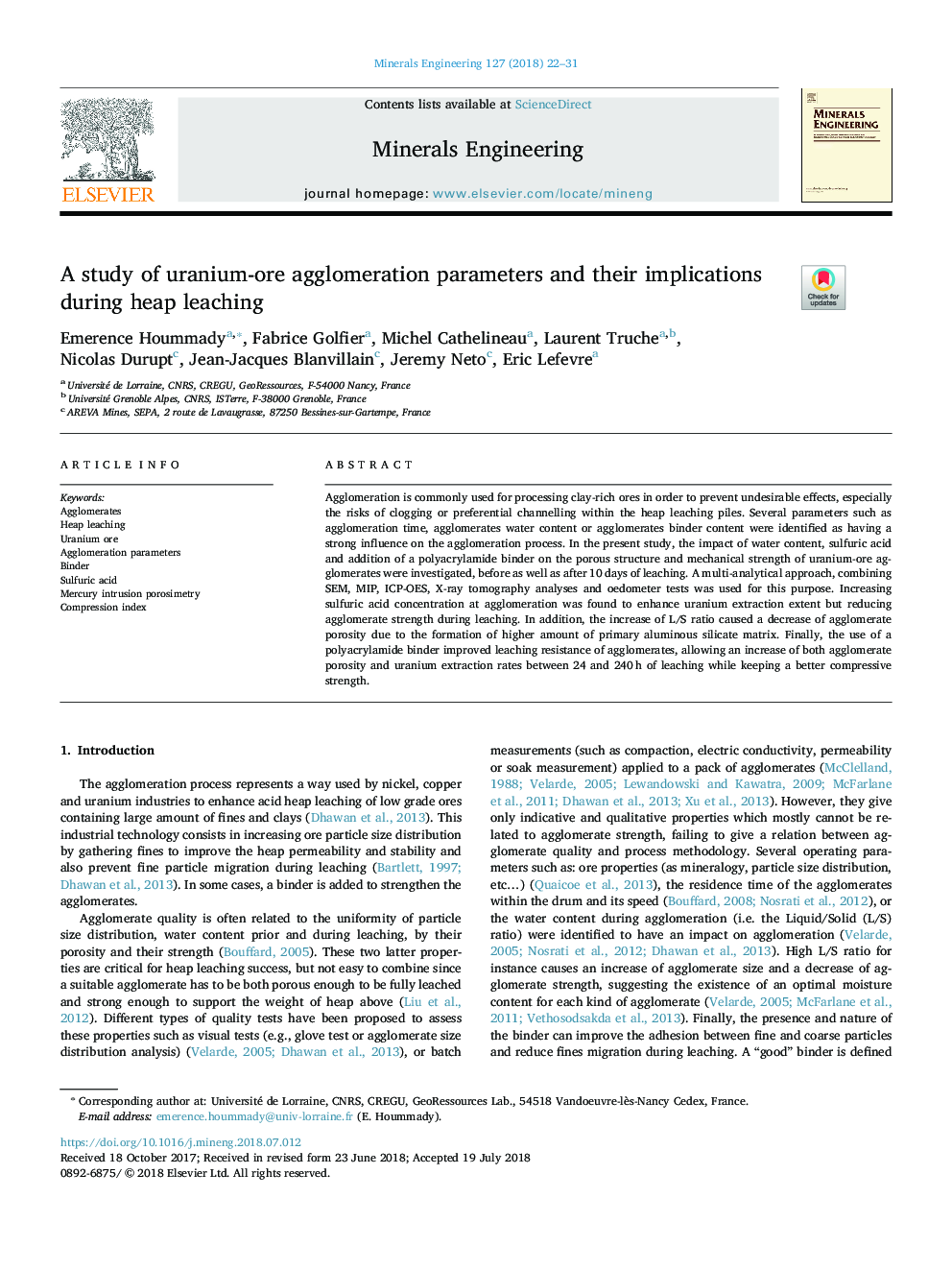| Article ID | Journal | Published Year | Pages | File Type |
|---|---|---|---|---|
| 6672071 | Minerals Engineering | 2018 | 10 Pages |
Abstract
Agglomeration is commonly used for processing clay-rich ores in order to prevent undesirable effects, especially the risks of clogging or preferential channelling within the heap leaching piles. Several parameters such as agglomeration time, agglomerates water content or agglomerates binder content were identified as having a strong influence on the agglomeration process. In the present study, the impact of water content, sulfuric acid and addition of a polyacrylamide binder on the porous structure and mechanical strength of uranium-ore agglomerates were investigated, before as well as after 10â¯days of leaching. A multi-analytical approach, combining SEM, MIP, ICP-OES, X-ray tomography analyses and oedometer tests was used for this purpose. Increasing sulfuric acid concentration at agglomeration was found to enhance uranium extraction extent but reducing agglomerate strength during leaching. In addition, the increase of L/S ratio caused a decrease of agglomerate porosity due to the formation of higher amount of primary aluminous silicate matrix. Finally, the use of a polyacrylamide binder improved leaching resistance of agglomerates, allowing an increase of both agglomerate porosity and uranium extraction rates between 24 and 240â¯h of leaching while keeping a better compressive strength.
Keywords
Related Topics
Physical Sciences and Engineering
Chemical Engineering
Chemical Engineering (General)
Authors
Emerence Hoummady, Fabrice Golfier, Michel Cathelineau, Laurent Truche, Nicolas Durupt, Jean-Jacques Blanvillain, Jeremy Neto, Eric Lefevre,
